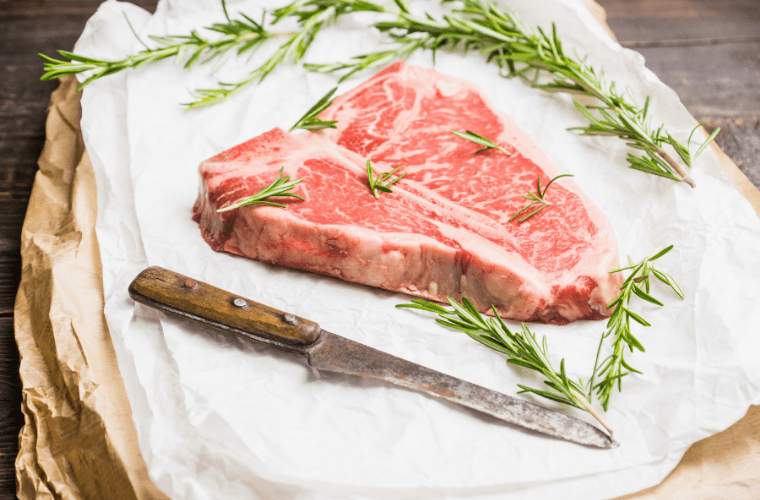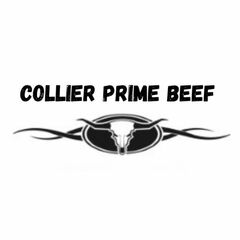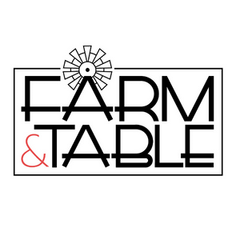Orders over $75 ship free from farms & butchers in your region!
Enter your zip code for the most accurate shipping info!
Introduction to Steak 101

by Amber Kohlhaas
Step up your steak IQ! In this quick guide, learn about the different cuts of steak and how to cook them to perfection.
Summer is steak season! While you can find many types of steak on the ChopLocal marketplace, choosing between different cuts can overwhelm some people. Step up your steak IQ just ahead of the grilling season. In this quick guide, learn how to decipher various cuts of steak and how to cook them correctly for their best purpose.
Intro to Meat 101
Here are a few tips for identifying the best fit for your desired end product when choosing a meat cut.
Fat = Flavor
Fat creates flavor. Marbling is intramuscular fat that visually appears as thin slivers of fat woven between the meat fibers. Meat cuts with higher marbling result in a juicier and more flavorful steak. In general, meat cuts with more marbling lead to a more desirable steak.
Loin = Lean
If a cut contains the term "loin," it is typically a leaner cut of steak. However, loin cuts (such as filet mignon and top sirloin) can also be very tender.
Muscles = Indicate Toughness Factor
Muscling within various meat cuts can indicate the tenderness to expect in your final cooked product. To easily decipher how tender a meat product will be, the general rule is that steaks containing commonly exercised muscles will typically be chewier. On the other hand, meat containing less commonly used muscles results in a more marbled and more palatable meat product.
Get to Know your Steaks
Not only are premium cuts of steak desirable, but as a bonus, they are also generally easier to cook. For family and friends who prefer their steak well-done, these are typically the best and most popular cut choices.
Known for being tender, premium cuts of steak do not need to be marinated in advance. Instead, cook premium cuts on high heat while using a reverse sear on thicker cuts.
Below is an introduction to the premium cuts of steak. Let's get started!
Premium Steak Cuts
Flat Iron: A marbled steak that is nearly as tender as filet mignon. The flat iron is easy to prepare with high-heat cooking.
New York Strip: A boneless steak, cut from the top sirloin, with a reputation for being juicy and flavorful. When attached to the bone, this steak is otherwise called a Kansas City Strip. Featuring moderate marbling, the New York Strip is best prepared with high dry heat by pan-frying, broiling, or grilling.
Porterhouse Steak/T-bone: A large T-bone with tenderloin (filet mignon) on one side and a strip of top loin (sirloin) steak on the other side. It is a lean cut that is flavorful, with a moderate amount of fat for juice. The Porterhouse can be more difficult to prepare as the tenderloin cooks faster than the strip. To prepare this cut, opt to grill, pan-fry, or broil it.
Ribeye Steak: A cut derived from the prime rib, the ribeye is the center best portion of the rib steak, without the bone. It is flavorsome and tender with marbling of fat that is ideal for fast and hot cooking. To prepare it, opt to pan-fry, broil, or grill it.
Cowboy Steak: Also called tomahawk, the cowboy steak is often a thick cut because of the bone. Essentially, the cowboy steak is a ribeye beef steak specifically cut with five inches of the rib bone left intact. It is very flavorful, with a lot of marbling and fat; therefore, a reverse sear is the best way to prepare this steak.
Filet Mignon: This famous steak comes from the beef tenderloin, the most tender cut of all steaks. As it lies beneath the loin eye muscle and under the backbone, it is exercised very little, contributing to its infamous tenderness. The Filet Mignon has a mild flavor and is best prepared with a pan-sear and oven finish.
Medium Tenderness Cuts
If you are looking for a delicious final product that is more budget-friendly, opt for a good, medium tenderness steak instead. The key to these cuts is to allow time for marinating before cooking to obtain the best tenderness and flavor.
Delmonico Steak: Typically derived from the ribeye, this cut can come from several parts of the beef. Its thick-cut preparation was popularized by Delmonico's restaurant in New York City during the mid-19th century.
This boneless steak features generous marbling resulting in a rich, tender, juicy, and full-flavored end product. It is an excellent option for the grill.
Chuck Eye Steak: The chuck eye steak is like a ribeye yet contains connective tissue from shoulder muscles, resulting in less tender but very flavorful meat. To prepare, marinate before cooking. Working-muscle cuts cook well with stewing and braising. Only cook to up to medium for best results.
Picanha/Coulotte: One of Brazil's most prized beef cuts, the Picanha is unique for retaining the fat until the steak is cooked. North American butchers may divide this cut into other cuts like the rump, the round, and the loin. An inexpensive steak sourced from the top sirloin, this cut can be roasted or grilled for a juicy and tender final product.
Flank Steak: A lean and flavorful cut that comes from the belly of the steer. It is meaty yet high in connective tissue; thus, cook flank steak by marinating and cooking to medium-rare with London-broil. This steak is an excellent protein option for fajitas, sandwiches, tacos, and stir-fry.
Hanger Steak: Also known as butcher's steak or hanging tenderloin, a hanger steak is valued for its flavor. The term butcher's steak originated from butchers often keeping the cut for themselves rather than selling it. Often mistaken for being a crude cut, it is taken from the upper belly and is one of the most tender cuts on the animal, except for the tenderloin. Also listed on occasional restaurant menus as a bistro steak, this steak is commonly marinated, grilled, and served in various traditional Mexican cuisine dishes.
Sirloin Steak: This cut located between the short loin and the round produces flavorful and tender bone-in or boneless steaks. The top sirloin is the more desirable cut for tenderness, while the bottom sirloin cut is larger and tougher. Traditionally, sirloin cuts prepare best with cooking methods such as broiling, grilling, or roasting.
Skirt Steak: A healthy cut with a robust beefy flavor. Recommendations call for rare or medium-rare cooking, as it can get chewy. A budget-friendly steak, this is an excellent protein option for fajitas and stir-fry.
Tri-Tip: A type of sirloin steak, the tri-tip is a Triangle steak from the bottom sirloin steak and Santa Maria steak. For best results, marinate this cut in advance and cook at a high temperature by grilling or broiling.
Round Steak: The eye of the round, located between the bottom round and top round, is flavorful and lean. It is best to marinate in advance and either braise or slow cook over low heat.
General Quick Tips
Marinated meats can remain in the refrigerator for up to 24 hours. The USDA recommends cooking hamburgers and ground beef mixtures to an internal temperature of 160°F. It is recommended that Whole muscle meats are cooked to 145°F (medium rare), 160°F (medium), or 170°F (well done).
Get Grilling!
Congratulations! You have officially passed Steak 101. Whether you are an aspiring chef, grill master, or want to step up your confidence while ordering from the menu, you now have the tools to step up your steak game. Your family and friends will admire and wonder where you gleaned your new steak connoisseur skills. Don't worry; your secret is safe with us. Happy steak season!
No posts found
Write a review









